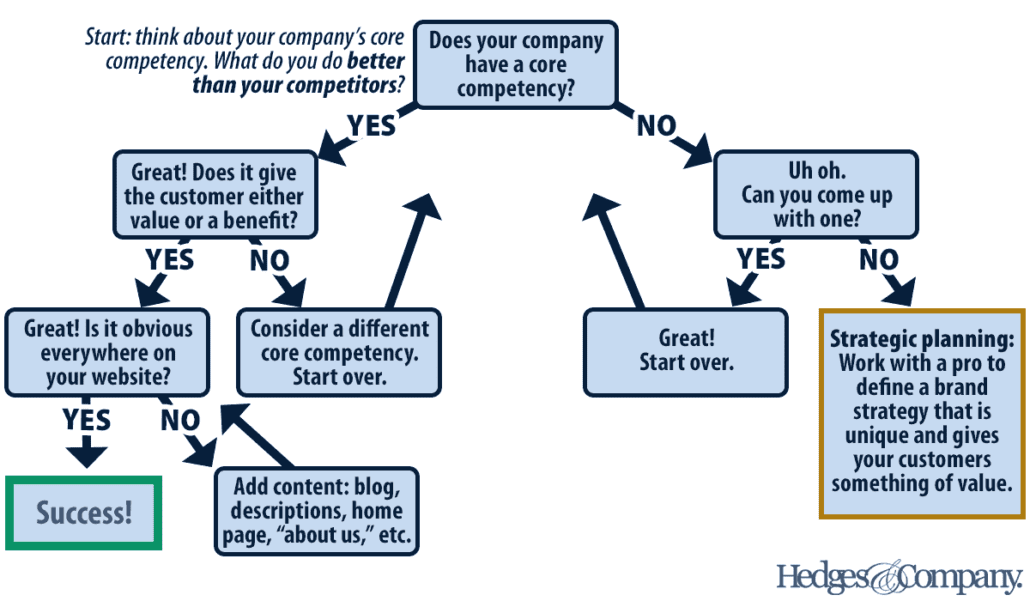A Brand Strategy Framework (Simplified) for Your Auto Parts Business
Your brand strategy framework is an important step to outline a brand strategy for your auto parts and accessories business.  This lets you define what your brand represents so you can define your brand on your website.
This lets you define what your brand represents so you can define your brand on your website.
Below, we’ll show you what a brand strategy is, how a brand strategy framework helps define it, and examples of strategies that work.
What’s a brand strategy framework?
A strategy framework is just a way to help define and organize your auto parts marketing strategy. There’s no need to make this complex, we’re keeping it simple.
There are a lot of potential questions to answer when creating your brand strategy. We’re going to simplify the process and ignore some of the more common elements of a brand strategy you can find online:
1). Who is your target audience? (Let’s ignore this for now!)
2). What are the needs of your audience? (Ignore this, too!)
3). What is your brand’s logo? (Yeah, definitely ignore this for now, too!)
4). What’s your brand’s “voice?” (Ignore.)
Why does a brand strategy matter?
Why does this matter? Companies with well-defined branding strategies are less dependent on the selling price of their products or services. They also have have higher profits. They’re trusted more by their customers, have more brand loyalty, and have more repeat purchases.
A brand strategy framework, simplified

CLICK TO ENLARGE: Our 5-minute brand strategy framework…a decision tree you can use to make to help define your brand in 5 minutes.
Here is the world’s most simplified strategy decision tree to help you with this process. Click the image for a larger version.
It’s simple because it’s based on your core competency. Nothing else.
Fair warning: The devil’s in the details. You may have a lot of work to do for your brand strategy after following this decision tree. But, as you go through the tree to define your brand, some of the answers to the brand strategy questions above may become obvious, too.
OK, let’s get started.
Start your framework process by defining your core competency. Simply put, what do you do better than your competitors? What are you really good at? What are you an expert on? What gives you a leg up? Defining your core competency doesn’t have to be complicated or require an MBA.
Core competencies for your automotive parts company
The best-run and most profitable companies in the world have some core competency that defines their brand. You can and should, too.
As a general rule, you can break down core competencies into one of three areas.
- Product development and innovation;
- Customer relationships or customer service;
- Operational efficiency.
Brand authenticity also builds brand trustworthiness. When you build trustworthiness you play into Google’s E-E-A-T (Experience, Expertise, Authoritative and Trustworthiness) algorithm.
Also, remember a core competency must have value to your customer, otherwise it doesn’t work for a brand strategy.
Let’s dig into these three core competencies next. Pick one and build your brand framework.
Core competency 1: Product development and innovation
Some companies are great at product development and innovation. They understand their products and the customers who use them. Sometimes these companies create their own trends through innovation. And the more they become great at product development the less dependent they are on selling on price. Probably the biggest example of this in consumer electronics is Apple.
Before you start thinking, “but I’m not Apple!” stop and think about this: Are you an expert in your market segment? Can you develop innovative new automotive products because you’re an expert?
If you’re a retailer, can you combine products from multiple brands to create product combos? Are you an expert enough to add valuable information to your product descriptions? Can you recommend products to your customers on a blog? Can you source your own private-label products?
If you answered “yes” to just one of these questions you may be able to focus on product development as a core competency.
Core competency 2: Customer service
Some companies focus on customer service. They understand their customers and offer superior service through technical innovations. They communicate well, resolve problems, and measure how well they achieve customer satisfaction.

Operational efficiency can be a core competency, like it is for Amazon.
Is this your core competency? It takes a lot of work but it can be. It certainly builds trustworthiness.
As a manufacturer or retailer of auto parts and accessories you may not have control of your own shipping (that’s FedEx, UPS or USPS). But you do have control of your communication with customers. You also have control over your returns/exchange policy, your satisfaction guarantee and your shipping policy.
Core competency 3: Operational efficiency
Some companies are great at operations. They can move packages coast-to-coast overnight, report exactly where that package is during the process and even change where it goes if the customer wants to (FedEx). Another example is a chain of restaurants that can serve thousands of hamburgers that look and taste exactly the same.
Operational efficiency is obviously easier for large automotive parts companies like Amazon than it is for small startups.
Core competencies that don’t work for a brand strategy framework
Remember a core competency must have some value for your customer. It should be something you do better than your competition.
Core competencies that don’t add value won’t reinforce your brand. Is selling a million SKUs a core competency? By itself, not likely. Lots of companies sell over a million automotive parts and accessories. Selling 500 SKUs in a market you are an expert in, with detailed product descriptions and how-to information is better than selling a million SKUs from an automated feed from a WD.
If a core competency requires a specific website function in order to work…that’s fine…but realize you need to be in control of this function, not depend on a plug-in that anyone else can buy. A true core competency that requires technology and coding can be expensive and/or take time.
Using your new brand strategy
Were you able to define your brand using our 5-minute brand strategy decision tree? If so, great!
If you picked a core competency, did that make defining your target customer and your customers’ needs obvious? If so, very cool!
Is your core competency absolutely obvious to anyone who visits your website? If so, awesome! Do your company colors and logo reinforce your new brand strategy? Yes? Wow, fantastic!
Do you have questions about building a brand strategy framework and using it in digital marketing? Just let us know, reach out on this website to send us a message.
Download a PDF version of this
 Click on this link to download your own brand strategy framework PDF file.
Click on this link to download your own brand strategy framework PDF file.





